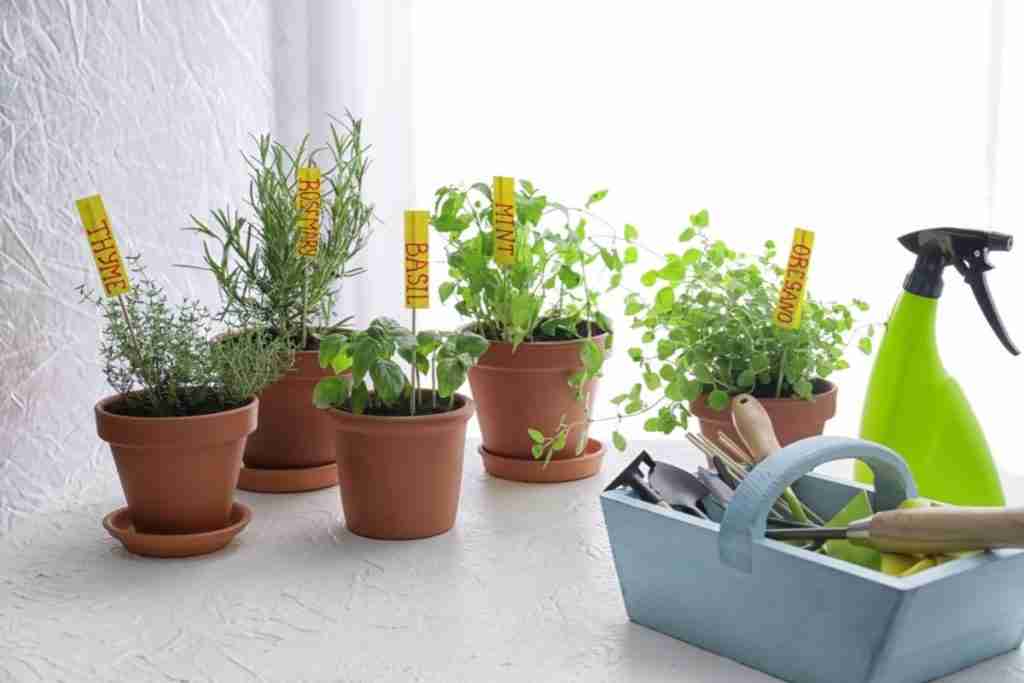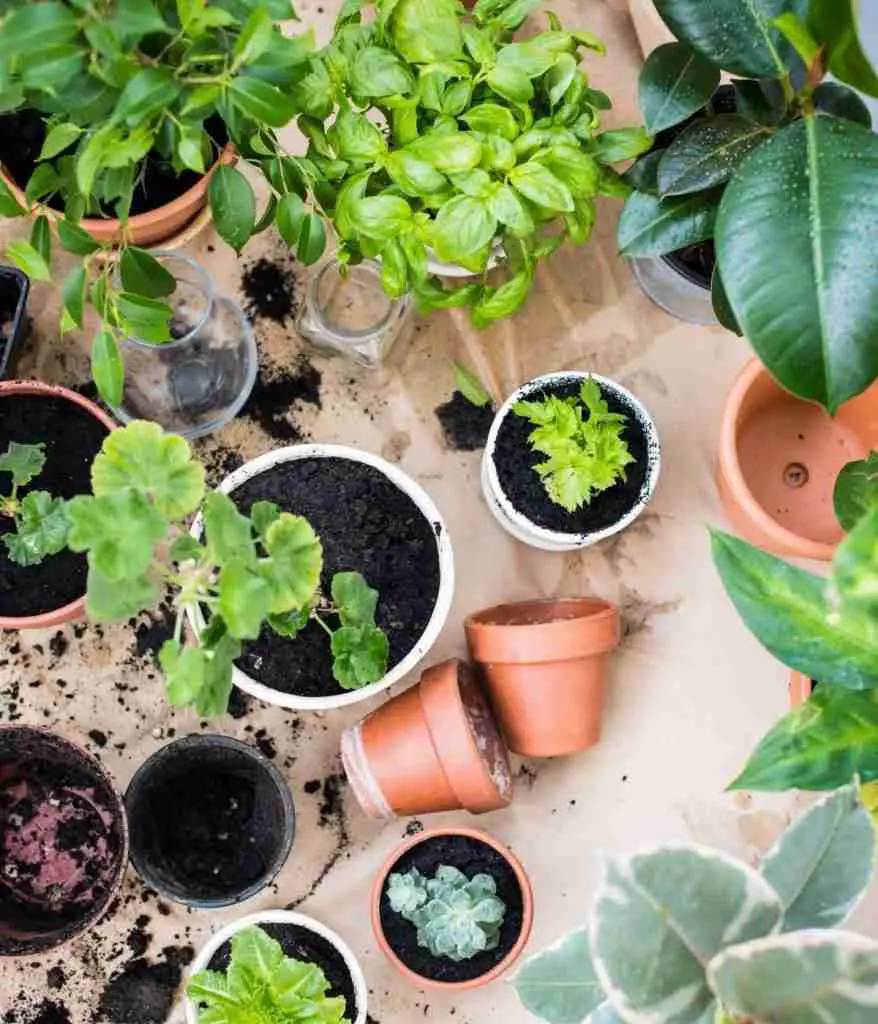
Having an herb garden of your own is a great way to save money and have access to fresh herbs all year round. Thankfully, they are pretty simple plants to grow and maintain, from seeds to harvest.
Growing herbs indoors is easy, but it does require some patience, time, and care, and most importantly, starting off on the right foot.
If you are excited to grow an herb garden indoors, you will be happy to know there is no reason to wait. While you should plant outdoor herbs at specific times due to weather, with indoor herbs you have the benefit of starting the process any time you like.
To help you start your journey to an indoor herb garden, we will be discussing:
- The best time to start planting herbs
- The best type of herbs to grow indoors
- Step-by-step instructions on how to start and maintain your herb seeds
- Tips for helping your seeds grow indoors
Table of Contents
The Best Time to Start Planting Herb Seeds Indoors
As long as you have the right tools and information, you do not have to worry about starting your herb plant at a particular part of the growing season. Herbs are often pretty hardy plants and can take root with ease with the proper amount of sun, water, and soil–no matter what time of year it is.
Best Time to Grow Plants Outdoors
If you are more interested in growing herbs out on the patio or in your garden, you must wait until early spring and after the last frost has passed. Knowing your planting zone is the best way to learn the right time to plant your seeds.
It is also vital that you place your herbs in a location where they will receive plenty of sunshine and have well-drained soil.
Types of Herbs You Should Grow Indoors From Seeds
Now, before planting your indoor garden seeds, you first need to choose the best seeds for your garden and your home. Although most homegrown herbs are fairly hardy, a handful seem to do better inside than others. These include:
- Chives
- Parsley
- Dill
- Basil
- Cilantro
- Oregano
- Mint
- Rosemary
- Sage
- Lemongrass
- Thyme
All of these herbs are popular options in a chef’s kitchen and thrive indoors in the right conditions.
Where to Buy Herb Seeds
You can purchase herb seeds from any local home and garden store or nursery. You can also find them in department stores and online.
Try to find seeds that are fresh and locally sourced. You also want seeds from reputable companies that understand the proper packing procedures and provide the freshest seeds possible.
Check the package date! Most seeds have a shelf life of one year, meaning if your herbs were harvested and packaged correctly, there is more than a 90% chance the seeds will grow and thrive.
Anything past the one-year mark decreases the number of seeds that will start to sprout. The chances of viable seeds are favorable after two or three years, but anything after that will be iffy.

A Step-by-Step Guide to Starting Your Herb Seeds Indoors
You are probably very excited to get your herb garden up and growing by now. You have your seeds; now it’s time to get them in the soil. Before you do, you need a few things to get started.
- Planters
- Indoor plant soil
- A great location
- Fertilizer
- Small watering can
- Spray bottle
Step 1: Buy Planters for Your Indoor Herb Garden

There are two ways to start the growing process with herb seeds: start them off in a pot or use a seed starting tray.
Most people like to keep their herbs sitting on window sills or countertops, so it is a popular idea to place them in small 4-6 inch planters with a few holes in the bottom to provide proper drainage.
If you choose to go with a seed starter tray, ensure it has proper drainage to avoid pooling water and provide adequate aeration.
Step 2: Fill Your Planters With Soil
There are plenty of great plant starter soils available online and in stores. While you don’t have to buy this specific product, it does have all of the nutrients and ingredients needed to produce strong and hardy herbs.
Fill your pot three-quarters of the way with soil. If you are using the trays, these are filled to the top. Never pack the soil tightly down. This will reduce drainage and aeration and can stop the growing process before it gets started.
Step 3. Place the Seeds in the Soil (Read the Labels)
Tip: Before planting your seeds, it is not required, but it is recommended you soak them in water for a few hours or all night before planting them. This boosts the moisture rate, removes the protective coating, and softens the seed.
Now you can put your seeds into the soil. Be sure to read the labels to know exactly how to plant each seed. Some herbs need to be covered in soil, while others need direct sunlight to germinate and need to sit on top of it.
Step 4. Give Your Herbs Plenty of Sunlight
The majority of herbs require around 7-8 hours of direct sun to thrive. The best place for your herb pots is on a windowsill or patio.
On extremely hot days during the summer months, some herbs will appreciate partial shade to reduce the chances of the herb leaves scorching or burning.

Step 5. Water Accordingly (Not Too Much, Not Too Little)
Typically, herbs do not require a lot of water. A good soak once a week is plenty for most herb plants. However, this is not the case with seeds or seedlings. During the first few months of the growth process, your seeds and baby seedlings will need more water than average.
Water your little herbs daily, just enough so the soil stays moist. Be cautious that you do not overwater your plants. This can cause them to drown and die, and they’ll never get the chance to see the sunlight.
Step 6. Maintenance (Care for Your Seeds and Seedlings)

The first few months are the most critical; after this time, herbs are pretty hardy and won’t require much attention.
Continue to check your soil to make sure it is never dried out, and keep it in as much natural lighting as possible. If you live in an area that doesn’t get tons of sun or you don’t have a good location in your home to provide the right amount of sun, purchase a grow light. This product will provide the lighting your little seeds need to survive.
Overview of critical information
Here is a quick recap of critical information for planting herb seeds:
- You can plant an indoor herb garden any time of the year.
- Plant outdoor herb garden seeds in the spring after the last spring frost.
- Herb seeds and seedlings require more moisture than full-grown herb plants (water daily).
- Purchase herb seeds from reputable companies and check the shelf life date.
- Provide plenty of sunlight or buy a grow light.
- Read labels to ensure you plant your seeds properly.
Tips for Starting Herb Seeds Indoors
As long as you follow the instructions and keep an eye on your herb seeds and seedlings, growing them indoors isn’t difficult. But there are some great tips and tricks that can help make the experience easier.
Make Sure Your Seeds are Viable
Instead of planting and failing over and over, check to make sure the seeds in your seed packs are viable. You can do this in a few different ways.
- Place ten seeds on top of a moist paper towel and fold the towel over to enclose the seeds, then put them into a plastic zip-lock bag and keep them in a dry, room-temperature space. After 7-10 days, any viable seed should begin to sprout.
- Drop your seeds into a bucket of water for about 15 minutes. If your seeds float, they are no good. Seeds with viable embryos are heavy and will sink to the bottom of the container.
Make Sure Your Seeds Are a Good Match
Not all seeds grow well together. Make sure the ones you plant in the same garden, known as companion planting, require the same care.
Examples:
Oregano and thyme are ideal neighbors to sage and rosemary. These plants love a sunny location and don’t require as much moisture as other homegrown herbs.
Mint, on the other hand, doesn’t play nice with anyone. This herb has very intrusive roots.
It likes to take over the space and does much better on its own.
Parsley and basil enjoy more water than most herbs and would keep the best company with like-minded plants such as chives.
Create a Good Foundation
You can help your seeds out by providing the best foundation possible for growth. Consider adding some pebbles or small rocks to the bottom of the pot to improve aeration and drainage.
Final Thoughts
Luckily, there is no reason to wait when starting fresh herbs from seeds indoors, whether you want to try dill, lemon balm, or any other culinary herbs. Because you can control the environment and maintenance of potted herbs, indoor herb gardens thrive all year long. So stop waiting and go grab your favorite flavors today.
